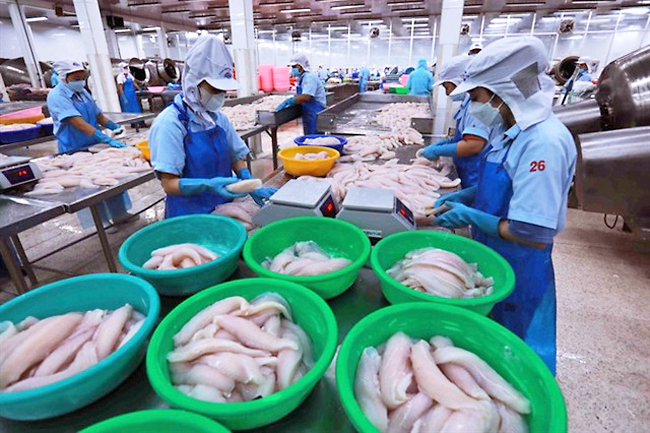ANN/VIETNAM NEWS – Vietnam’s trade sector continues to play a vital role in fueling economic growth, with total import-export turnover hitting USD163 billion by March 15, up 12 per cent year-on-year. This robust performance, representing an increase of USD12 billion compared to the same period last year, highlights the sector’s resilience amid ongoing global economic uncertainty. Since the start of 2025, Vietnam’s export turnover has climbed to USD82.
3 billion, a rise of 9.1 per cent, while imports reached USD80.49 billion, up 15.

2 per cent. This resulted in a trade surplus of USD1.81 billion.
To maintain momentum, enterprises are stepping up efforts to boost market share and export value. Thirteen product categories have surpassed USD1 billion in export revenue, together accounting for USD65 billion, or 79 per cent of total exports. Leading the way are computers and electronic components, which generated USD16.
5 billion, a 29.1 per cent year-on-year rise. Mobile phones and accessories followed with USD15.
7 billion in exports. Other standout sectors include electronic equipment and components, up 29.2 per cent to USD3.
75 billion, while coffee exports surged 42 per cent to USD675 million. Seafood exports rose 9.4 per cent to USD603 million, underscoring Vietnam’s diversified export strength.
However, global trade growth is slowing, with the International Monetary Fund, World Bank, and Organisation for Economic Co-operation and Development projecting modest growth of 3.2–3.3 per cent in 2025.
Geopolitical tensions, energy instability and ongoing supply chain disruptions pose risks to Vietnam’s export-driven economy. Stricter sustainability and environmental standards in key markets such as the United States (US) and European Union (EU) add further complexity. While exports continue to support economic growth, new US trade policies are emerging as a growing concern, given their potential impact on supply chains and global economic stability.
From April 2, the US introduced new trade and tax measures that could affect international trade flows. Businesses are being urged to monitor developments closely and adapt accordingly. At a recent seminar on US trade policies and Vietnam’s response, CEO of SGS Vietnam Nguyen Nam Tran said a lack of deep understanding of new US regulations remained a significant challenge for local exporters.
These changes could impact export volumes and raise compliance costs, putting pressure on manufacturers. To stay competitive, Vietnamese enterprises must keep pace with evolving global policies and strengthen their export strategies. Since Donald Trump came to power again, businesses have closely tracked US trade shifts, recognising both risks and opportunities.
While challenges persist, core export industries – electronics, textiles, footwear, wood and seafood – are expected to maintain growth into 2025. Electronics exports, already contributing USD28 billion (over 30 per cent of total exports), are forecast to climb further, potentially reaching USD140 billion by year’s end. The textile and footwear sectors, despite facing tougher EU and US sustainability rules, continue to show resilience.
By the end of Q1, textile exports are projected to rise nine per cent, wooden products nearly nine per cent, and footwear 10 per cent. According to UK-based consulting firm Kelmer Group, Vietnam is benefiting from free trade agreements and increased investment interest, especially in electronics, garment-textiles and renewable energy. Diversifying supply chains and attracting multinational firms is solidifying its role as a global manufacturing hub.
SGS Vietnam recommends shifting from low-value processing to high-value production. Strengthening domestic manufacturing, improving product quality and aligning with international standards will be essential for maintaining Vietnam’s competitiveness..
















